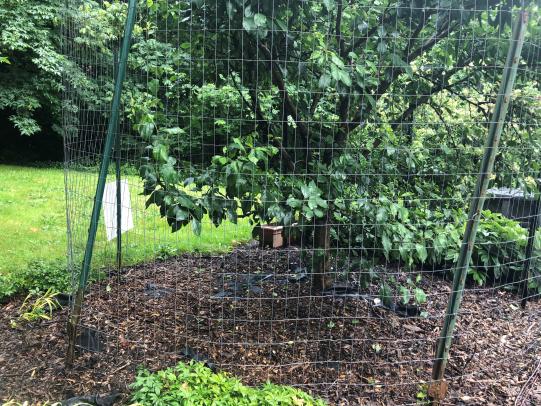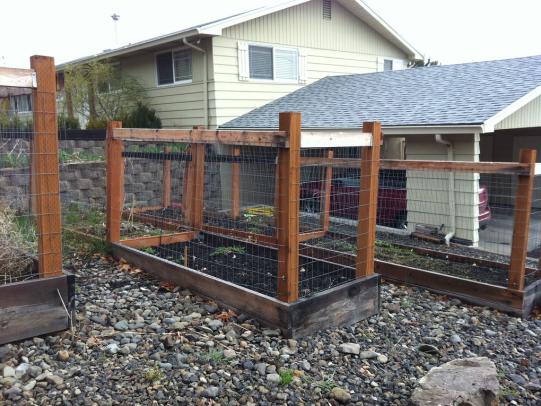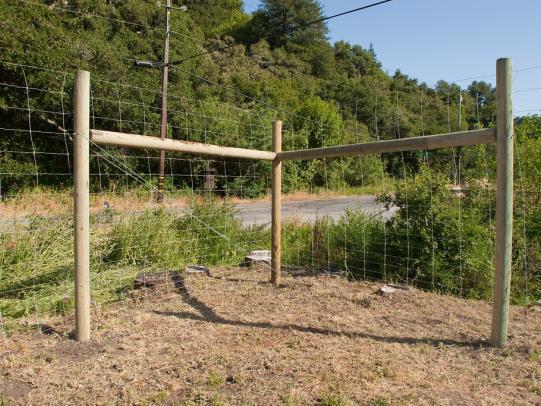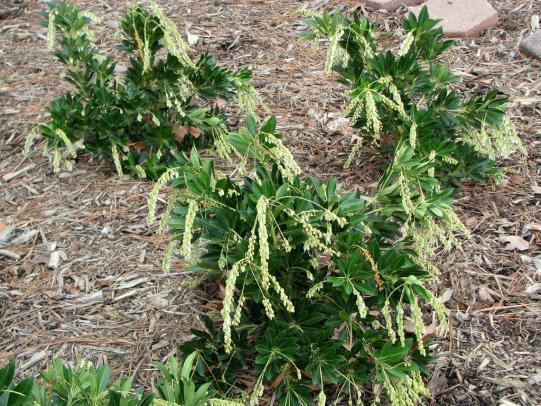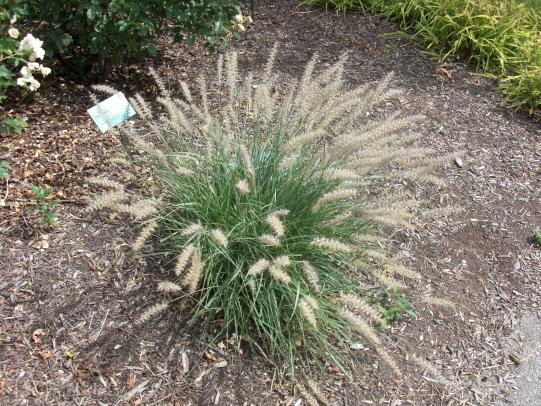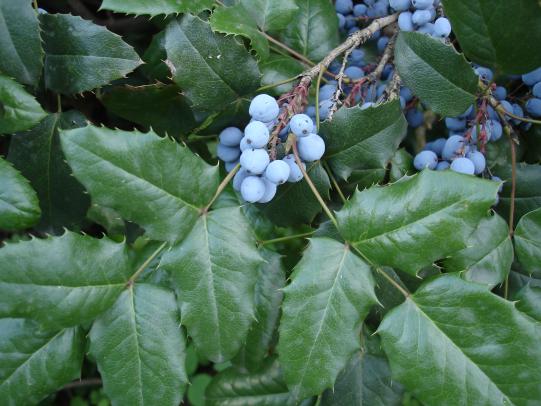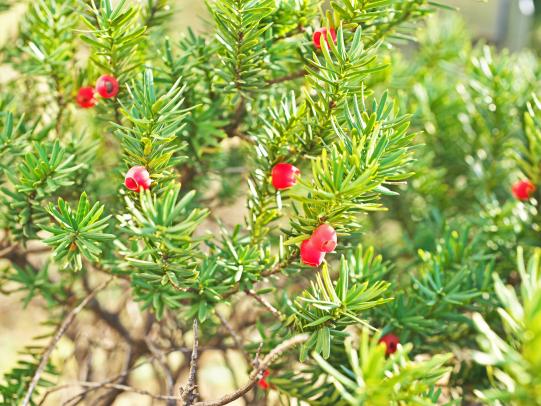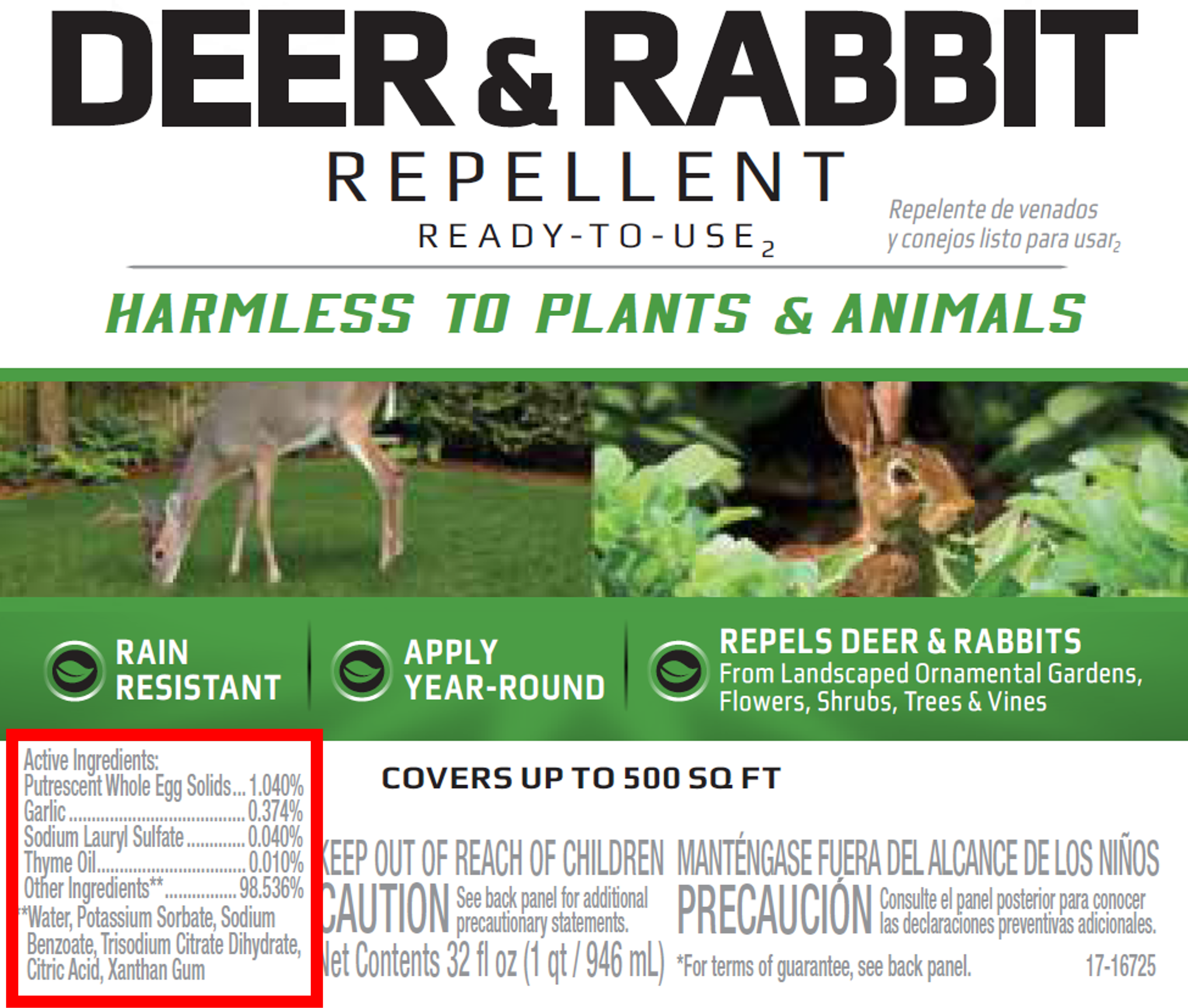-
Pest SolutionsPESTS + WEEDSUSING PESTICIDES OR HERBICIDES?
I should be a large image.
Deer & Elk
Multiple species in the Pacific Northwest
Updated Apr 22, 2025
Make a Positive Identification
Deer are active at night. You may not see them directly in your neighborhood. Look for signs of deer and elk activity, including browsing damage, footprints, and feces.
Species: Deer
Appearance

"Deer Browsing" by photo fiddler is licensed under CC BY-ND 2.0.
Deer browse plants. They eat the tips of a wide range of different plants.
Species: Deer Damage
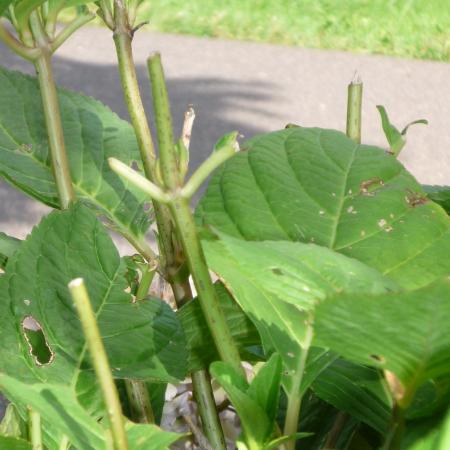
Look for browsing damage from deer on plants in your yard. Deer eat the tips of plant shoots as shown in the photo.
Species: Deer Damage
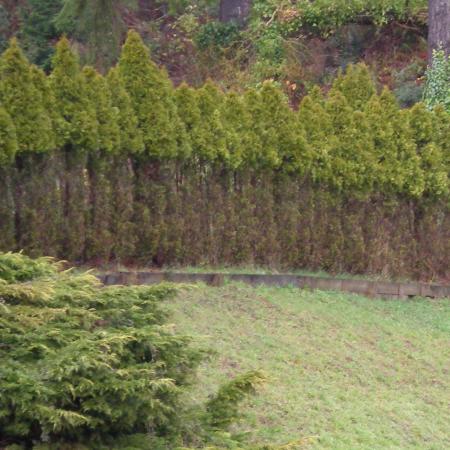
"Classic Deer Browse Damage in Astoria, OR" by Gail Langellotto is marked with CC BY-NC-ND 2.0.
The photo shows deer-browsing damage on an arborvitae hedge. The deer eat the tips of the lower branches as far up as they can reach.
Species: Deer Damage
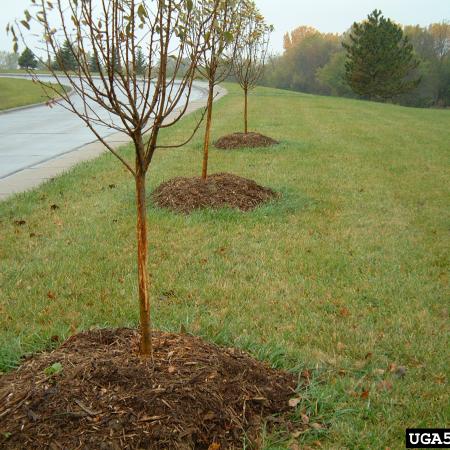
David Mooter, Prairie Silvics, Inc., Bugwood.org
The photo shows landscape trees damaged by deer rubbing their antlers. Deer rub their antlers against tree trunks to remove the velvet. The rubbing damages the bark of the tree. It exposes the tree’s vascular tissue (cambium).
Species: Deer Track
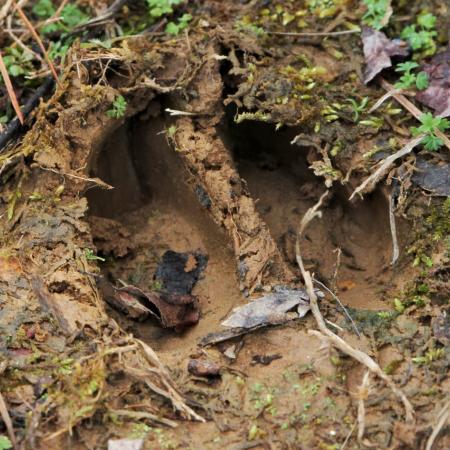
PeteMuller, iStock
Look for deer hoof prints as a sign of deer activity near plants you care about. Deer hooves are split into two toes as shown in the photo.
Species: Deer Feces
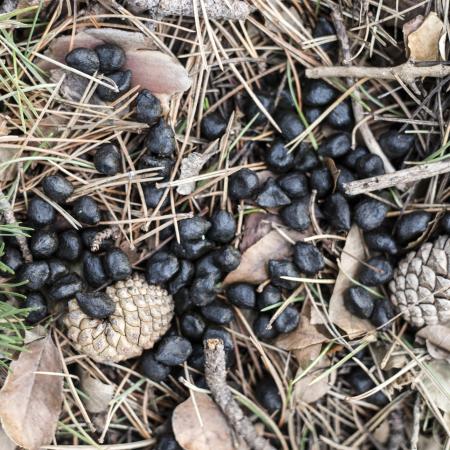
kmatija, IStock
Look for deer droppings as a sign of deer activity near plants you care about. If deer are eating very lush forage, the feces may be softer and in a patty or clump rather than discrete pellets.
Deer & Elk Benefits
- Deer and elk are part of the natural environment in the Pacific Northwest.
- As both herbivores and prey, deer and elk are essential animals in the ecosystem. Their feeding activity can directly and indirectly affect many plants and other animals.
- People enjoy watching deer as part of nature.
Deer & Elk Risks
- They become a nuisance when their browsing damages plants in farms, gardens, and landscapes.
- They rub their antlers against trees, which damages the bark and cambium (living tissue).
Risk Card
Does it cause harm?
Adults & Children
Low
Usually avoid people
Property
Some
Damage plants through browsing and rubbing antlers
Pets
Some
Dogs will chase deer and bark at them at night if left outside.
Annoyance
Low
Damage plants when unprotected
Environment
Helpful
Part of the natural environment in the Pacific Northwest
Action Optional
Learn to coexist with them on your property.
Take Action?
Deer and elk are part of the natural environment in the Pacific Northwest. Learn to coexist with them on your property.
Do I need to take action?
- Take steps to protect vegetable gardens, fruit trees, roses, and other plants for which you can’t tolerate deer damage.
- If you can tolerate deer browsing on your plants, no action is necessary.
Important safety precautions
- Don’t feed deer. Feeding them can spread disease and habituate them to people.
- Don’t approach deer. They are wild animals and can injure you if they feel threatened.
Report aggressive deer & elk to your state’s wildlife agency:
Prevent Deer & Elk Problems
- Watch for deer damage on plants you care about.
- Learn to live with minor damage to your plants.
- Appreciate deer as an interesting part of the natural environment.
- If the damage they cause is intolerable, consider fencing them out of the area.
Solutions for Deer & Elk
- Install sturdy fencing to exclude deer and elk from plants for which you can’t tolerate their browsing.
- For areas where you don’t fence them out, select deer-resistant plants to reduce browsing damage.
- Larger, established plants can usually recover from mild browsing.
- Dogs left outside at night in a confined area can help keep deer away. Left free, dogs will chase deer, which can be problematic.
- Deer repellents and deterrents are widely available. Some can help, but they are not a reliable way to keep deer away from your plants.
NEED HELP?
Consider a licensed pest control company. Learn How to Hire a Pest Control Company.
Your local Extension Specialist in Oregon and other states can suggest other methods.
Jump to
| Method | Does it work? | Is it safe? | Recommendation |
|---|---|---|---|
A Build a Deer Fence |
Very effective |
Low risk |
Recommended |
B Select Deer-Resistant Plants |
Effective |
Low risk |
Recommended |
C Leave Dogs Out at Night |
Effective |
Low risk |
Recommended |
D Deterrents |
Somewhat effective |
Low risk |
Recommended |
E Deer Repellents |
Somewhat effective |
Low risk |
Recommended |
A
Build a Deer Fence
Non-Chemical Method
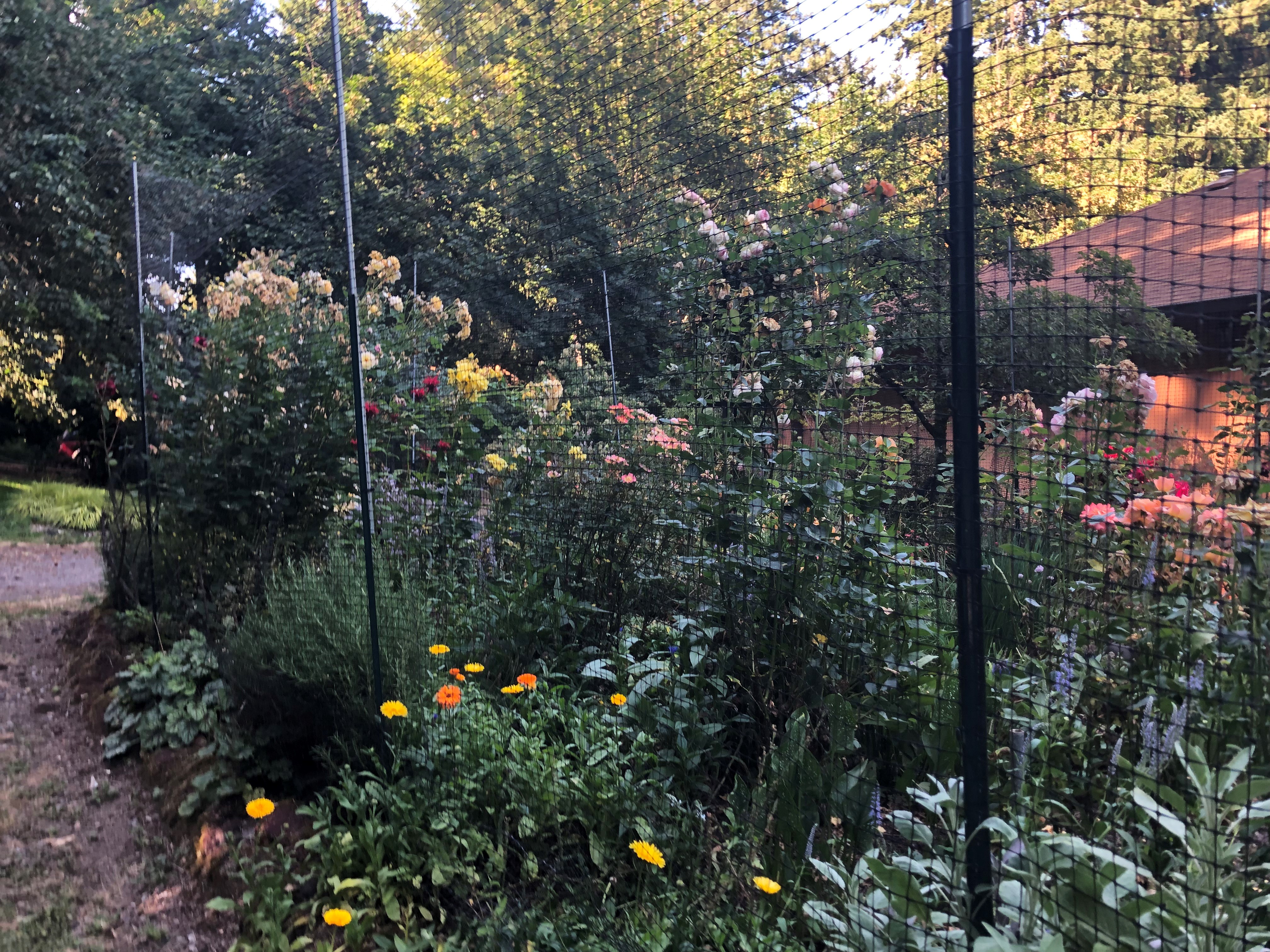
Weston Miller, Oregon State University
Build a Deer Fence
Recommended
Sturdy fencing keeps deer and elk away from plants you want to protect, such as the roses in the photo. Fencing is your best option to protect plants in garden, orchard, and landscape areas that can’t tolerate deer damage.
| Does it work? | Very effective In places where deer can get a running start, plan on an overall height of at least 76 inches (6.3 feet) tall to keep deer out. |
| How much effort? | High effort Purchasing fencing materials and installing a deer fence requires significant effort and skill. Hire a professional as needed. |
| What's the risk? | Low risk |
| Possible risk of exposure or harm from chemicals | NONE |
Build deer fences with sturdy materials and quality construction. They will last longer and require less maintenance than fences built with cheaper materials and methods.
B
Select Deer-Resistant Plants
Non-Chemical Method

"Rosemary Bush" by NatalieMaynor is licensed under CC BY 2.0.
Select Deer-Resistant Plants
Recommended
For areas you don’t fence deer out, select deer-resistant plants to minimize damage caused by browsing deer.
| Does it work? | Effective Deer are selective browsers. They prefer some foods over others. Plants deer usually avoid are considered deer-resistant. |
| How much effort? | Moderate effort Purchase plant materials. Prepare the soil. Install plants and mulch. Provide regular water to establish new plants. |
| What's the risk? | Low risk |
| Possible risk of exposure or harm from chemicals | NONE |
For areas where you don’t fence deer out, choose plants that deer prefer not to eat.
About Deer Browsing
Deer browse plants for food, which means they eat the tips of plant shoots.
Deer eat a variety of vegetation, including woody plants, grasses, fruits, nuts, ornamental trees, shrubs, vines, and vegetables.
A plant can be deer-resistant for several reasons
- Many of the most deer-resistant plants are poisonous to deer. Some plants are poisonous at all times and others only at certain growth stages.
- Tastes, preferences, and digestibility of deer food resources change throughout the year.
- Availability of other, more preferred foods also changes throughout the year.
DEER FOOD CHOICES CHANGE THROUGH THE YEAR
- If an adequate supply of natural browse is available, deer are less likely to eat ornamental plants.
- When the natural food supply is low, deer are more likely to damage your plants. They may cause heavy browsing damage.
- A large deer population can create competition for food, causing deer to eat many plants they normally avoid.
- Deer damage on plants usually occurs from late fall through early spring. They often have adequate food supplies during the rest of the year.
Poisonous Plant Alert
C
Leave Dogs Out at Night
Non-Chemical Method
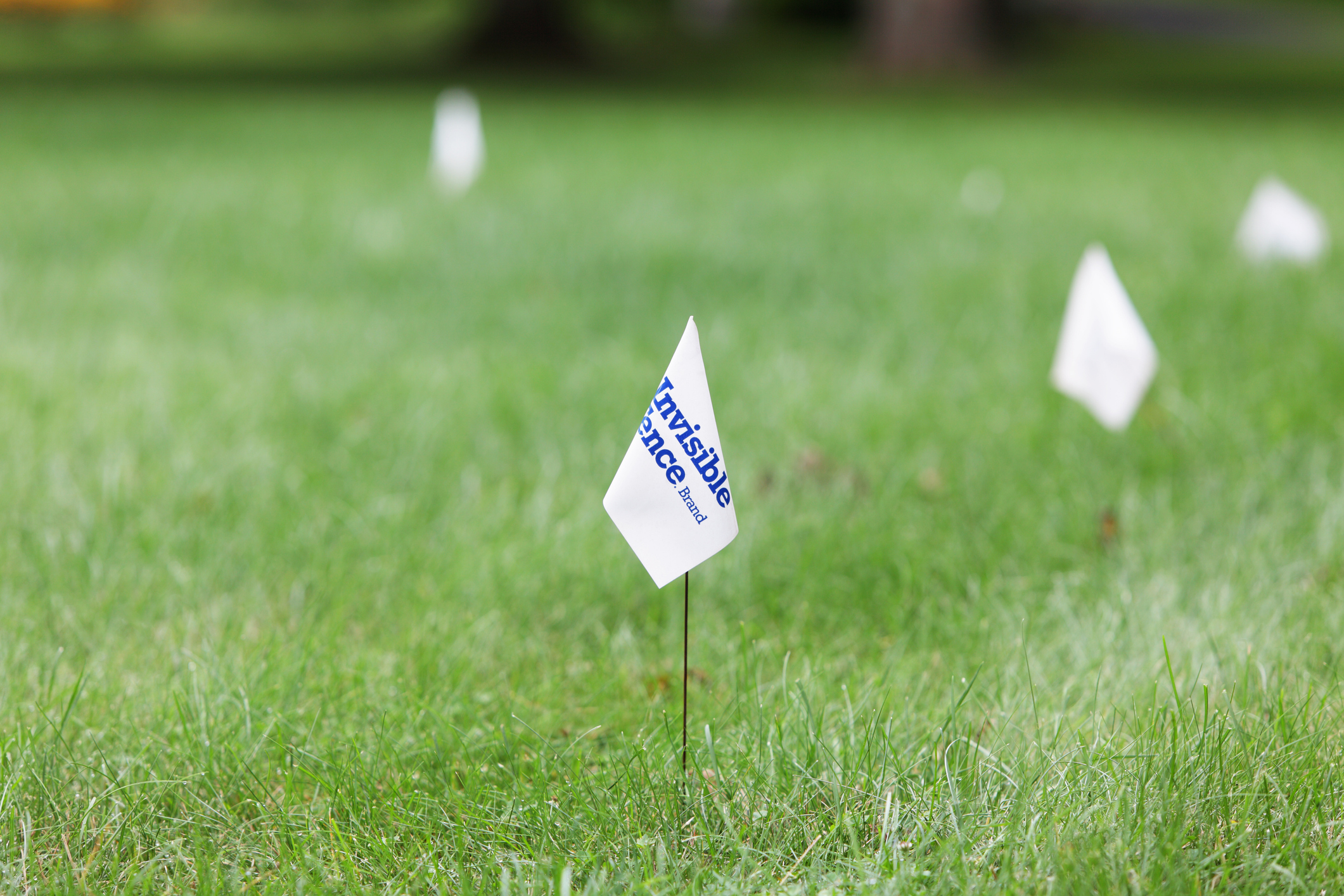
Willowpix, iStock
Leave Dogs Out at Night
Recommended
Dogs can be effective deer deterrents. They must be able to run loose within a confined area. Invisible fences keep dogs confined to an area. The photo shows flagging to mark the perimeter wire of an invisible fence.
Dogs barking at night might disturb your neighbors.
| Does it work? | Effective When the dog gets close, a special collar gives the dog a mild shock. Dogs quickly learn the boundaries. These devices don’t work with all dogs. |
| How much effort? | Moderate effort Purchase invisible fence materials and install the fence. You must then train your dog to stay inside the invisible fence. |
| What's the risk? | Low risk Dogs left out at night may be preyed on by a predator, including coyotes or mountain lions. |
| Possible risk of exposure or harm from chemicals | NONE |
D
Deterrents
Non-Chemical Method
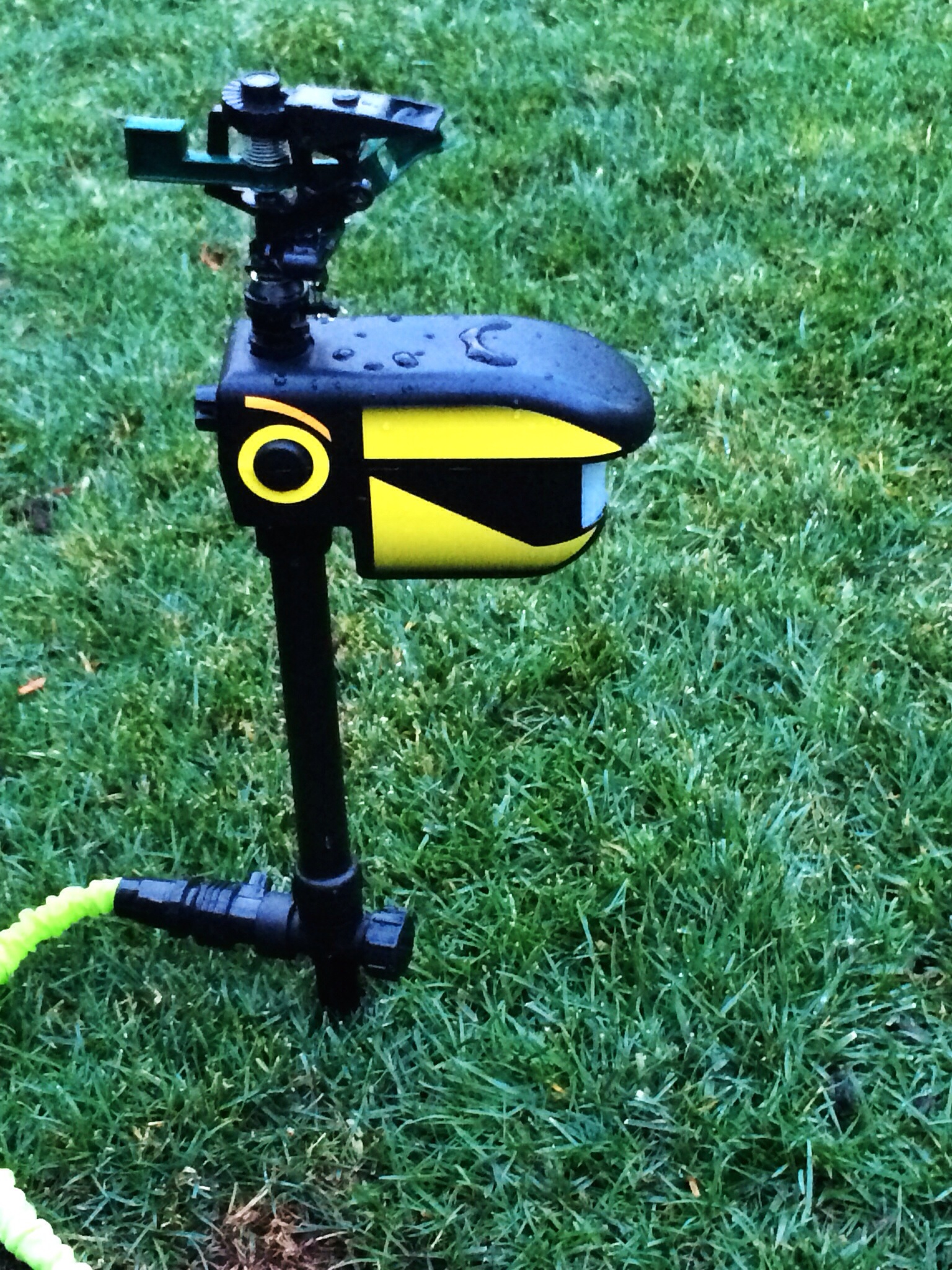
"Image" by miheco is licensed under CC BY-SA 2.0.
Deterrents
Recommended
-
Motion-activated sprinklers and similar devices work to scare deer away.
-
A burst of water is activated by a sensor that detects motion.
-
Other devices emit sounds that scare deer away temporarily.
| Does it work? | Somewhat effective Deer become habituated to scare devices. Change locations and/or devices as needed to protect your plants. |
| How much effort? | Low effort Purchase and install deterrent device. Routinely move it to new locations for best results. |
| What's the risk? | Low risk |
| Possible risk of exposure or harm from chemicals | NONE |
E
Deer Repellents
Chemical Method: Use with caution
Deer Repellents
Recommended
- Taste repellents make the plant taste bad to deer. They are applied directly to the plant.
- Some deer-repellent products use hot pepper oil (capsaicin). Deer may avoid freshly sprayed plants. There’s limited information about how effective it is.
- Other repellent products use predator urine such as mountain lion or other scents to repel deer. However, they may draw curious coyotes or mountain lions, so they are not recommended.
- The red box on this example product label highlights active ingredients putrescent egg solids, garlic, sodium lauryl sulfate, thyme oil. The label lists deer and rabbits.
| Does it work? | Somewhat effective
|
| How much effort? | Moderate effort You must reapply repellents every two weeks or after heavy rains. |
| What's the risk? | Low risk
|
| Possible risk of exposure or harm from chemicals | Using animal repellents includes some amount of risk. The lowest risk comes with using alternative methods. You may be exposed to an animal repellent if you:
Follow directions closely to reduce risk. |
Some repellent products are available for home use. Some active ingredients are listed below. They may be effective repellents for deer and elk. Look for these ingredient names in the “Active Ingredients” section of product labels.
- Putrescent whole egg solids
- Garlic oil/powder
- Capsaicin
- Dried blood
- Crushed clove
- Cinnamon oil, and other plant oils
- Sodium lauryl sulfate
Suggested active ingredients are from the Pesticide Information Center Online (PICOL) Database. They are permitted for HOME use in Oregon. Read the label for application directions and effectiveness information.
More Information About Animal Repellents
- If using repellents, remember to rotate among different products. Animals quickly learn to ignore products that have no immediate negative effect.
- Most repellent products must be applied to the surface of plants.
- Products will lose effectiveness or be washed off completely by rain. They will also be degraded by the sun’s UV rays over time.
- Follow the label instructions about reapplication rates and timing.
Deer & Elk References
Living with Wildlife: Deer and Elk
Oregon Department of Fish and Wildlife
Deer-resistant plants for Central Oregon
OSU Extension Service
Deer-Resistant Plants (PDF)
Michigan State University
Manage Wildlife Conflicts in Your Home and Garden
OSU Extension Service

